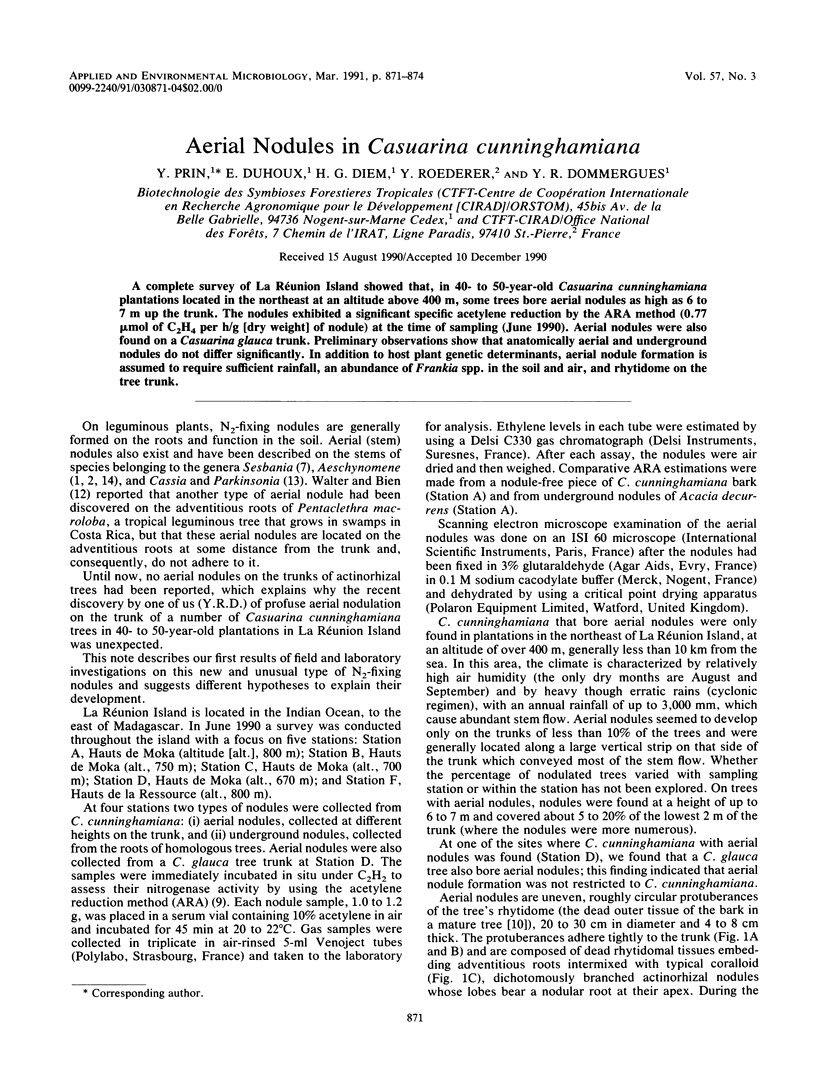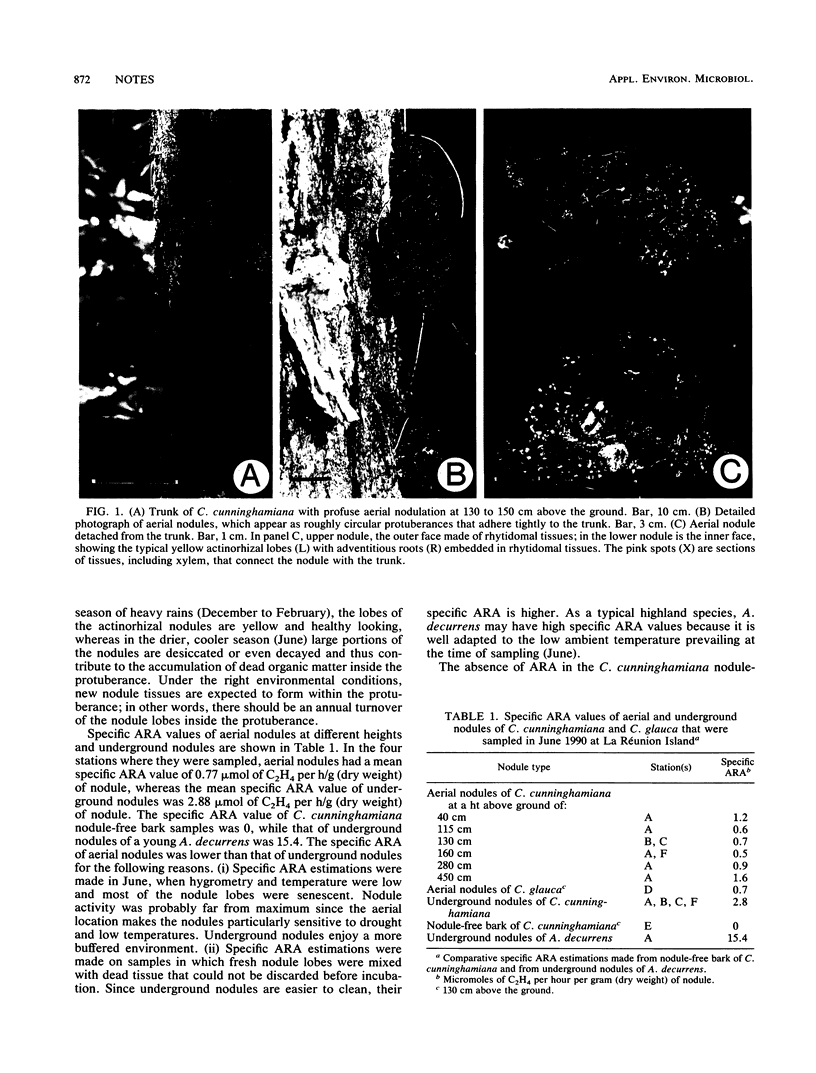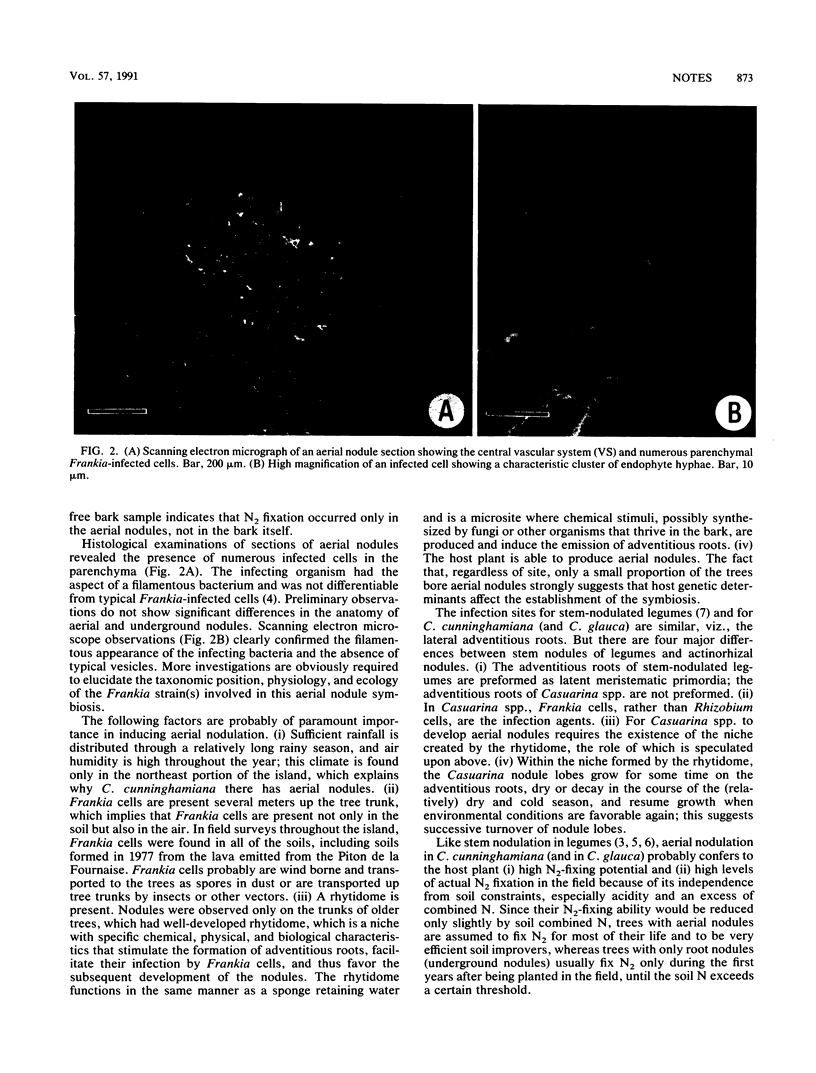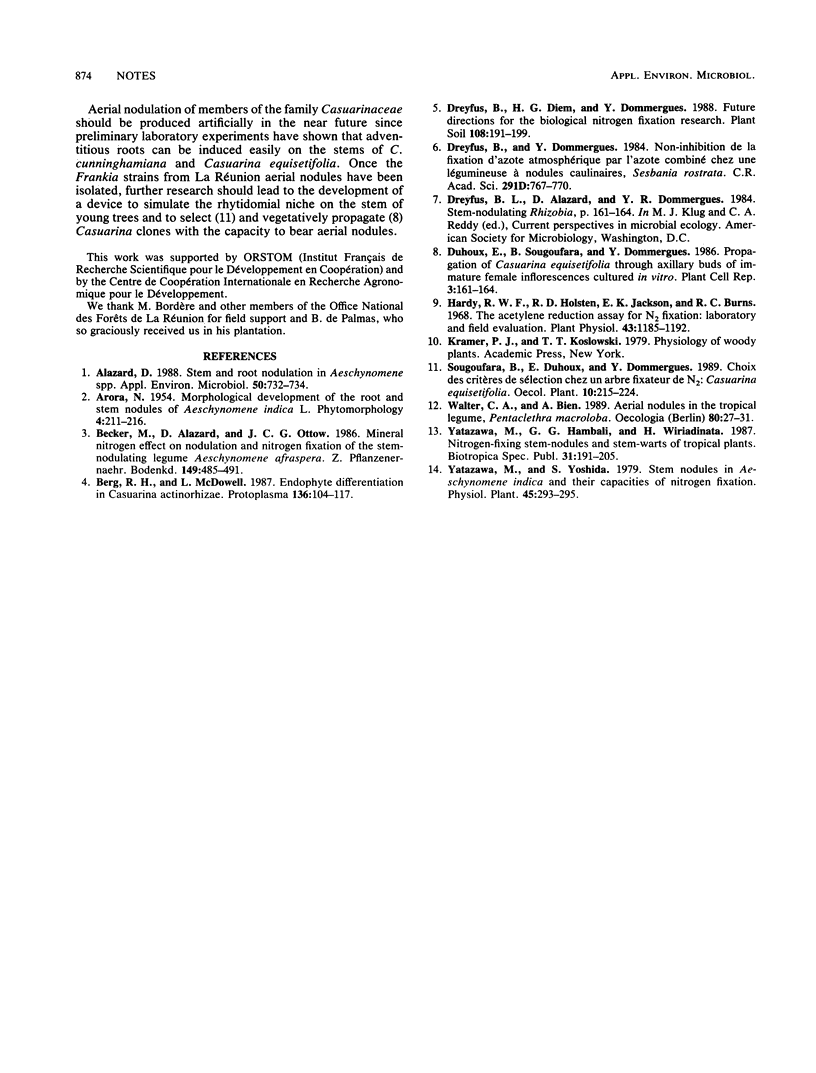Abstract
A complete survey of La Réunion Island showed that, in 40- to 50-year-old Casuarina cunninghamiana plantations located in the northeast at an altitude above 400 m, some trees bore aerial nodules as high as 6 to 7 m up the trunk. The nodules exhibited a significant specific acetylene reduction by the ARA method (0.77 μmol of C2H4 per h/g [dry weight] of nodule) at the time of sampling (June 1990). Aerial nodules were also found on a Casuarina glauca trunk. Preliminary observations show that anatomically aerial and underground nodules do not differ significantly. In addition to host plant genetic determinants, aerial nodule formation is assumed to require sufficient rainfall, an abundance of Frankia spp. in the soil and air, and rhytidome on the tree trunk.
Full text
PDF



Images in this article
Selected References
These references are in PubMed. This may not be the complete list of references from this article.
- Alazard D. Stem and Root Nodulation in Aeschynomene spp. Appl Environ Microbiol. 1985 Sep;50(3):732–734. doi: 10.1128/aem.50.3.732-734.1985. [DOI] [PMC free article] [PubMed] [Google Scholar]
- Hardy R. W., Holsten R. D., Jackson E. K., Burns R. C. The acetylene-ethylene assay for n(2) fixation: laboratory and field evaluation. Plant Physiol. 1968 Aug;43(8):1185–1207. doi: 10.1104/pp.43.8.1185. [DOI] [PMC free article] [PubMed] [Google Scholar]




